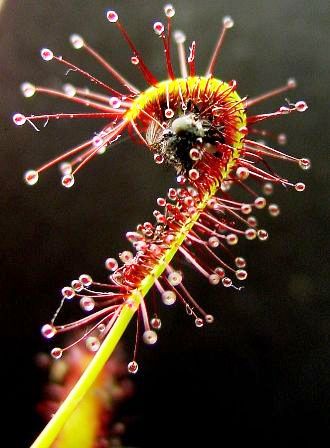- Series:Plants, Transcript English
Psalm 91:3
“Surely he shall deliver thee from the snare of the fowler, and from the noisome pestilence.”
The Peruvian Andes gave the world the potato, which is one of the largest crops in the world today. The problem is, the modern potato is plagued by potato beetles and aphids, which also carry some viral diseases to the plant. Now a wild potato found in the Bolivian Andes is being studied because it seems to be quite resistant to these pests.

A potato may someday be developed that can save itself from the pestilence of aphids and beetles. But we cannot save ourselves from the pestilence of our sin. That’s why God sent His Son, Jesus Christ, to die on the cross for our sins.
Prayer:
Lord, I thank You that I can depend on You for my salvation. Amen.
Notes:
Bombardier Beetles and Fever Trees, William Agosta, pp. 22 25. Photo: Sticky trichomes of a carnivorous plant, Drosera capensis, with a trapped insect. Courtesy of Noah Elhardt. (CC-BY-SA 3.0)
